Myanmar
Welcome to Myanmar
Myanmar, often called “The Golden Land,” is a captivating Southeast Asian country rich in culture, history, and natural beauty.
Stretching from the Eastern Himalayas to the Indian Ocean, Myanmar offers a diverse landscape that includes snow-capped mountains, lush tropical forests, pristine beaches, and ancient cities filled with glittering pagodas and temples. After decades of isolation, Myanmar is gradually opening up to the world, inviting travelers to explore its vibrant cities, serene lakes, and welcoming communities while experiencing a culture that remains authentic and deeply rooted in tradition.
1.
Cultural Richness and Heritage: Myanmar is home to some of the most spectacular Buddhist sites in the world, including the iconic Shwedagon Pagoda in Yangon, the temple-strewn plains of Bagan, and the sacred Golden Rock at Kyaiktiyo. These sites offer a glimpse into the country’s spiritual heart and architectural marvels that date back centuries.
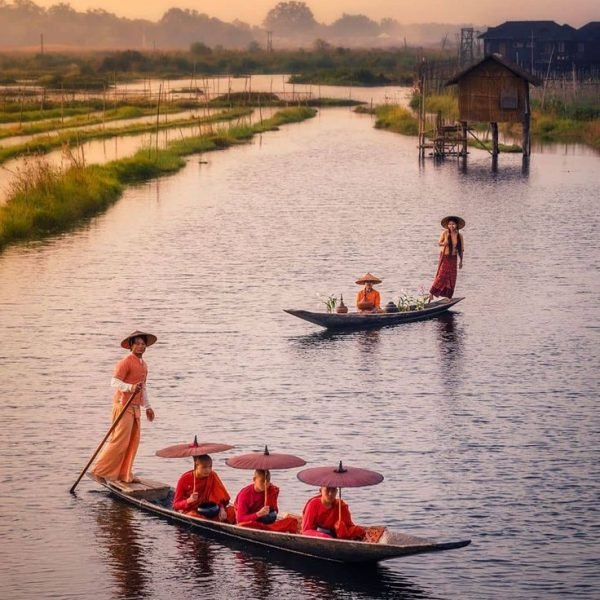
2.
Natural Beauty and Adventure: Beyond its cultural treasures, Myanmar boasts breathtaking natural landscapes. Visitors can trek through the hills of Shan State, explore the floating villages and gardens of Inle Lake, relax on the white sandy beaches of Ngapali, or cruise along the mighty Ayeyarwady River. The country’s diverse terrain makes it a paradise for nature lovers and adventure seekers alike.
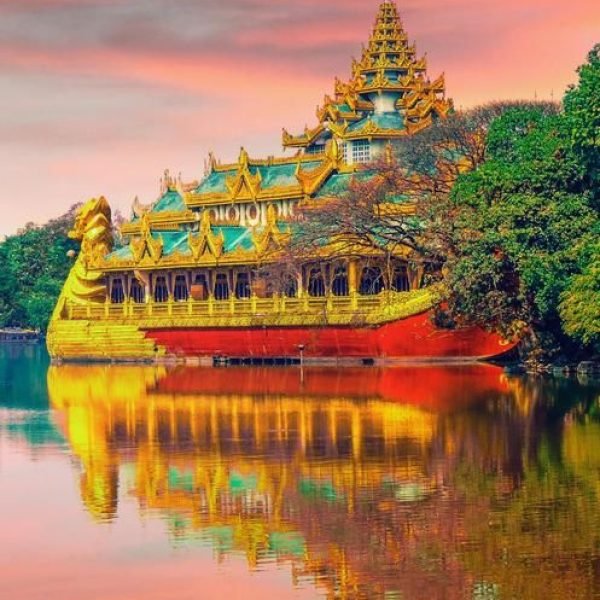
Planning Your Trip
Visa Information
Most travelers to Myanmar require a visa, which can be obtained online through an e-visa system or at Myanmar embassies and consulates. The e-visa is typically valid for tourism purposes and allows a stay of up to 28 days. It is advisable to apply for a visa well in advance of your trip to avoid any delays. Always check the latest visa requirements before traveling, as policies may change.
Best Time to Visit
Myanmar has a tropical climate with three main seasons: the cool dry season, the hot season, and the rainy season. The best time to visit is during the cool dry season from November to February. During these months, the weather is pleasant with lower humidity and moderate temperatures, making it ideal for sightseeing and outdoor activities. The months just before and after this peak season (October and March) can also be good times to visit, though temperatures may be higher. The rainy season, from mid-May to late September, brings heavy monsoon rains that can make travel difficult in some areas, so it is generally less recommended for tourists.
Getting To and Around
Getting to Myanmar
Most international travelers arrive in Myanmar via Yangon International Airport, which is the country’s main gateway. There are direct flights from major cities in Southeast Asia, such as Bangkok, Singapore, and Kuala Lumpur. Mandalay also has an international airport with flights connecting to regional hubs. Overland entry is possible from neighboring countries like Thailand, China, and India, but it requires proper documentation and planning.
Getting Around
Travel within Myanmar can be an adventure in itself. Domestic flights are the quickest way to cover large distances between major cities like Yangon, Mandalay, Bagan, and Inle Lake. For shorter distances, buses and taxis are common, though road conditions can vary. Trains offer a scenic and authentic travel experience, especially routes such as the journey over the Gokteik Viaduct in Shan State. Boats and ferries are essential for exploring places like Inle Lake and the Ayeyarwady River. Organized tours and local guides can enhance your experience by providing insights and easing logistics.
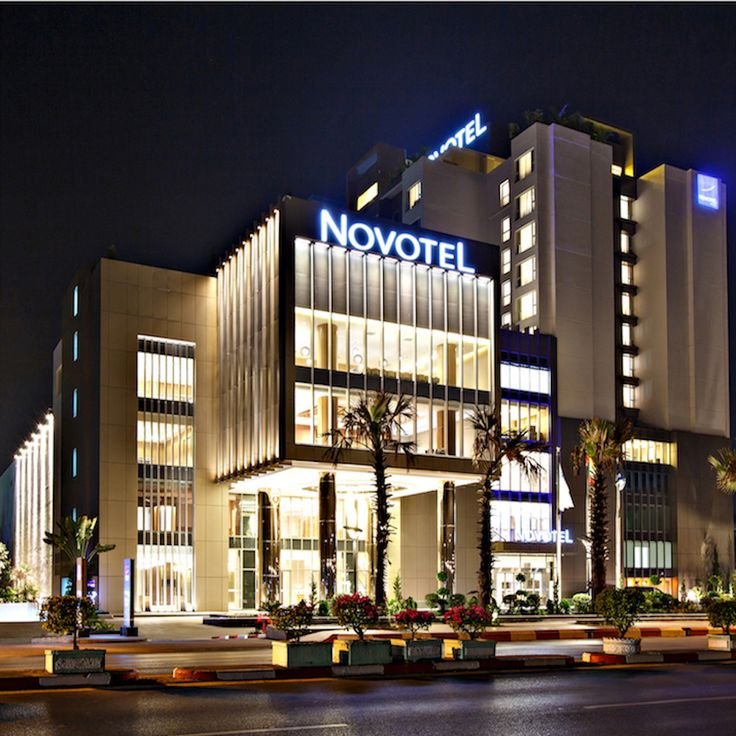
Accommodation
Myanmar offers a broad range of accommodation options catering to all budgets and preferences, from simple guesthouses to luxurious five-star hotels. Whether you are a budget traveler seeking a basic place to rest or a luxury seeker wanting world-class amenities, Myanmar has something to offer.
Accommodation Options
Budget Accommodation
For travelers on a tight budget, Myanmar provides numerous guesthouses and small hotels starting from around $5 per night. These are typically family-run establishments offering basic rooms, sometimes with shared bathrooms and limited amenities. In more remote areas, you may encounter places without air conditioning, 24-hour electricity, or hot water, and occasionally you might have to wash with a bucket rather than a shower. Despite the simplicity, these budget accommodations often provide an authentic local experience and a chance to connect with fellow travelers in popular spots like Yangon, Bagan, and Inle Lake.
Hostels are still relatively rare in Myanmar but are beginning to appear, especially in Yangon. Budget hotels and guesthouses often have friendly atmospheres where travelers can meet and share tips.
Mid-Range Accommodation
Mid-range hotels in Myanmar generally cost between $40 and $120 per night. These establishments offer more spacious rooms with private bathrooms, air conditioning, and reliable electricity. Many mid-range hotels include breakfast in their rates and can assist with local tours and airport transfers. These hotels strike a good balance between comfort and affordability and are found in major cities and tourist hubs.
Luxury Accommodation
Myanmar’s luxury hotels and resorts provide top-tier services and amenities, including swimming pools, spas, fine dining, and stunning views. Notable examples include the LOTTE Hotel Yangon, which features a serene lobby, an infinity pool overlooking a lake, and authentic Korean dining options. The Pan Pacific Yangon is another high-end choice, known for its prime location near major attractions, spacious rooms, an infinity pool, gym, and excellent service. The Novotel Yangon Max is praised for its relaxing atmosphere, friendly staff, and excellent breakfast offerings.
Luxury resorts are also available in scenic locations such as Ngapali Beach, Inle Lake, and Bagan, offering tranquil settings and exceptional hospitality for travelers seeking indulgence.
Unique Stays and Alternatives
While homestays and camping are technically illegal for foreigners in Myanmar, in remote regions, they are sometimes tolerated, offering a unique way to experience local life. However, these options come with risks and limited facilities.
For those who prefer apartment-style living, there are aparthotels and serviced apartments available in Yangon and Mandalay, providing more space and kitchen facilities for longer stays.
Popular Areas to Stay
- Yangon: The largest city offers a mix of colonial charm and modern amenities, with a wide range of hotels from budget to luxury.
- Bagan: Known for its ancient temples, Bagan has hotels and lodges that offer easy access to the archaeological sites.
- Inle Lake: Accommodations here range from cozy guesthouses to eco-resorts, perfect for exploring the lake’s floating villages.
- Ngapali Beach: This beach destination features luxury resorts and boutique hotels along pristine shores.
- Mandalay: The cultural hub with hotels that provide comfort and proximity to historic sites.
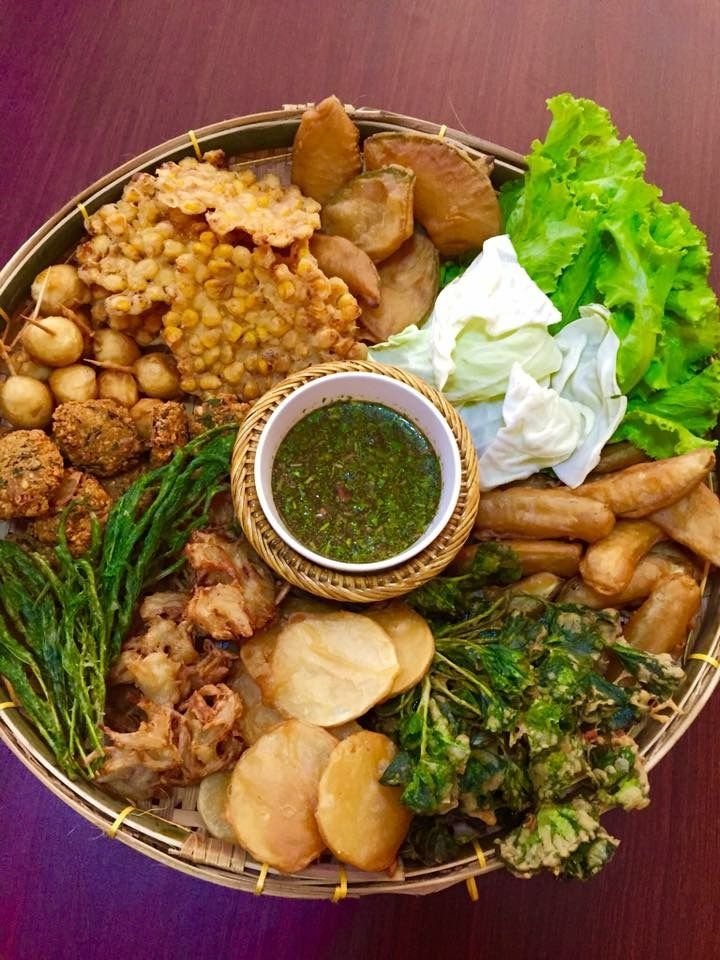
Food and Drink
Myanmar’s cuisine is a delightful reflection of its diverse ethnic groups and geographical influences, blending flavors from India, China, and Thailand with its own unique culinary traditions. Food in Myanmar is fresh, flavorful, and often features a balance of sour, salty, and spicy tastes.
Must-Try Dishes
- Mohinga: Considered Myanmar’s national dish, this is a flavorful fish broth soup with rice noodles, often eaten for breakfast. It is aromatic and comforting, usually garnished with crispy fritters, boiled eggs, and fresh herbs.
- Shan Noodles: Originating from the Shan State, these noodles are served with a tangy tomato-based sauce, minced meat, and pickled vegetables. They are lighter and less spicy than some other dishes.
- Tea Leaf Salad (Lahpet Thoke): A unique Burmese specialty made from fermented tea leaves mixed with nuts, peas, garlic, and chili. It is both a salad and a snack, offering a distinctive bitter and crunchy flavor.
- Curry and Rice: Burmese curries are milder than Indian ones but rich in flavor, often served with steamed rice and a variety of side dishes like pickles and fresh vegetables.
- Grilled Meats and Seafood: Street vendors and restaurants offer delicious grilled chicken, pork skewers, and fresh seafood, often accompanied by dipping sauces.
Street Food and Markets
Street food is abundant and a great way to experience local flavors. Popular snacks include samosas, spring rolls, and fried snacks. Markets are vibrant places to try fresh fruits, sweets, and traditional Burmese desserts such as coconut jelly and sticky rice treats.
Drinks
- Tea: Tea shops are social hubs in Myanmar, serving strong black tea with condensed milk or green tea.
- Lahpet Yay: Fermented tea leaf juice, consumed as a traditional drink.
- Local Beers: Myanmar Beer and Mandalay Beer are popular local brews.
- Toddy: A traditional palm wine, often homemade and consumed in rural areas.
Dining Tips
- Burmese meals are often shared family-style, with several dishes served at once.
- When eating in temples or religious sites, it is polite to avoid meat dishes.
- Tap water is not safe to drink; bottled water is widely available.
- Many restaurants now cater to international tastes, offering vegetarian and vegan options.

Must-See Attractions
- Shwedagon Pagoda, Yangon
The Shwedagon Pagoda is Myanmar’s most iconic landmark and one of the holiest Buddhist sites in the world. This golden stupa, believed to be over 2,500 years old, dominates the Yangon skyline with its shimmering gold leaf and thousands of diamonds and precious stones embedded in its structure. Visiting Shwedagon is a profound cultural and spiritual experience, especially at sunset when the pagoda glows warmly against the twilight sky. The complex is vast, with numerous smaller shrines, statues, and meditation areas to explore, offering insight into Burmese religious life.
- Bagan Temples
Bagan is a UNESCO World Heritage site and a must-visit for history and architecture enthusiasts. The vast plains of Bagan are dotted with over 2,000 ancient temples, stupas, and pagodas, some dating back to the 11th and 12th centuries. The best way to experience Bagan is by hot air balloon at sunrise, providing breathtaking panoramic views of the temple-strewn landscape. Exploring by e-bike or horse cart allows visitors to discover lesser-known temples and soak in the mystical atmosphere. The Bagan Archaeological Museum nearby offers further context with its collection of relics and murals.
- Mandalay and Surroundings
Mandalay, Myanmar’s cultural heart, is rich with royal history and religious sites. The Mandalay Palace, the last royal palace of the Burmese monarchy, showcases traditional Southeast Asian architecture and offers a glimpse into the country’s regal past. Nearby, the Kuthodaw Pagoda houses the world’s largest book—a collection of 730 marble slabs inscribed with Buddhist teachings. Mandalay Hill provides panoramic views of the city and surrounding countryside, especially magical at sunset. Visitors should also explore Amarapura, famous for the U Bein Bridge, the world’s longest teakwood bridge, perfect for a scenic stroll or sunset photography.
- Inle Lake
Nestled in the Shan Hills, Inle Lake is renowned for its unique floating villages, gardens, and leg-rowing fishermen. The lake’s tranquil waters reflect a way of life largely unchanged for centuries. Boat tours allow visitors to witness traditional silk weaving, visit local markets, and explore ancient pagodas. The surrounding hills offer trekking opportunities to meet ethnic minority communities and enjoy spectacular landscapes. Inle Lake is also a hub for handicrafts, including silverwork and pottery, making it a great place for cultural immersion and shopping.
- Kyaiktiyo Pagoda (Golden Rock)
This remarkable pilgrimage site in Mon State features a small pagoda perched precariously on a massive granite boulder covered with gold leaf. The Golden Rock appears to defy gravity on the edge of a cliff and is one of Myanmar’s three most important Buddhist sites. Pilgrims and visitors alike climb hundreds of steps to reach the summit, where they can witness stunning views and participate in religious rituals. The site is especially atmospheric at dawn and dusk, when the rock and pagoda glow in the soft light.
- Ngwe Saung Beach
Ngwe Saung is emerging as Myanmar’s premier beach destination, offering pristine white sands and clear blue waters with fewer crowds than other regional beaches. It is ideal for relaxation, swimming, and water sports such as snorkeling and kayaking. Recent investments have improved facilities and accommodations, making it a comfortable getaway for beach lovers seeking tranquility away from tourist hotspots.
- Mount Popa
Known as the “Mount Olympus of Myanmar,” Mount Popa is an extinct volcano and a spiritual center home to numerous nat (spirit) shrines. The climb to the summit involves ascending 777 steps, rewarded with panoramic views and visits to ancient monasteries. Pilgrims come here to pay homage to the powerful spirits believed to reside on the mountain. The surrounding landscape is lush and offers excellent hiking and nature photography opportunities.
- Bago
Once the capital of the Mon Kingdom, Bago is rich in Buddhist heritage with many impressive temples and pagodas. Highlights include the massive reclining Buddha statue, one of the largest in the world, and the four giant standing Buddhas guarding the city’s corners. Bago offers a quieter, less touristy alternative to Yangon with deep cultural significance and beautiful architecture.
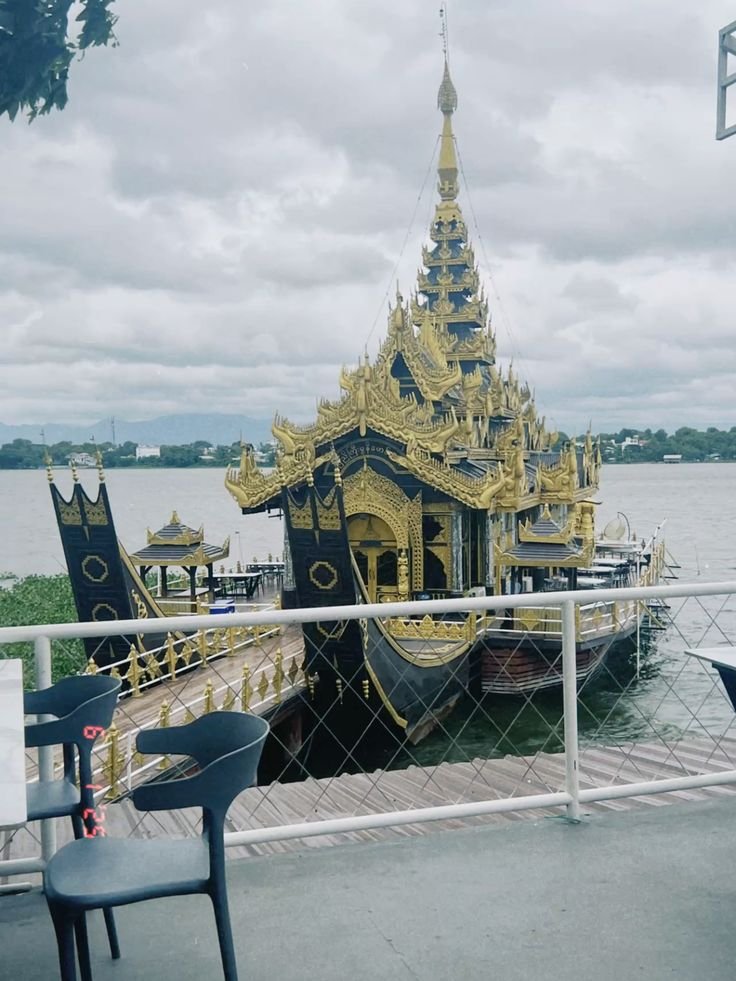
Must-Do Activities
To fully experience Myanmar’s charm, here are essential activities that bring the country’s culture, nature, and history to life.
- Hot Air Balloon Ride Over Bagan
One of the most unforgettable experiences in Myanmar is soaring over the ancient temples of Bagan at sunrise in a hot air balloon. The aerial perspective reveals the vastness of the archaeological site and the stunning interplay of light and shadow across the plains. This serene flight offers a magical start to the day and is a photographer’s dream.
- Sunset Boat Cruise on the Irrawaddy River
Cruising the Irrawaddy River, Myanmar’s lifeline, is a peaceful way to see rural life, riverine landscapes, and historic sites. Sunset cruises near Bagan or Mandalay are particularly popular, offering spectacular views as the sun dips below the horizon, casting golden hues over the water and temples.
- Explore Traditional Markets
Markets in Yangon, Mandalay, and Inle Lake are vibrant hubs of local life. Visiting markets like Bogyoke Aung San Market in Yangon or the floating markets on Inle Lake allows travelers to sample local foods, buy handicrafts, and observe daily Burmese life. These markets are perfect for cultural immersion and souvenir shopping.
- Trekking in Shan State
For adventure seekers, trekking in the hills around Inle Lake or towns like Hsipaw offers a chance to explore scenic trails, visit ethnic minority villages, and experience rural Myanmar. Treks range from easy day hikes to multi-day journeys through forests and mountains, providing insight into traditional lifestyles and breathtaking natural beauty.
- Visit Ancient Pagodas and Temples
Myanmar’s spiritual heritage is best experienced by visiting its many pagodas and temples. Besides the famous Shwedagon and Bagan sites, smaller temples such as the Thatbyinnyu and Htilominlo in Bagan or the Saddar Cave near Hpa-An offer quieter, contemplative experiences with intricate architecture and religious art.
- Attend a Traditional Festival
If your trip coincides with a local festival, such as Thingyan (Burmese New Year Water Festival) in April or the Full Moon Festival at Kyaiktiyo, participating in these lively celebrations offers a deep cultural connection. Festivals feature traditional music, dance, religious ceremonies, and communal feasting, showcasing Myanmar’s rich traditions.
- Ride the U Bein Bridge at Sunset
The U Bein Bridge in Amarapura is the world’s longest teakwood bridge and a favorite spot for locals and tourists alike. Walking or cycling across the bridge at sunset provides stunning views of the lake and the surrounding countryside, with local fishermen and monks adding to the picturesque scene.
- Discover Local Handicrafts
Myanmar is known for its exquisite handicrafts, including lacquerware, silk weaving, pottery, and silverwork. Workshops and villages around Inle Lake and Mandalay offer opportunities to watch artisans at work and purchase authentic souvenirs directly from the makers.
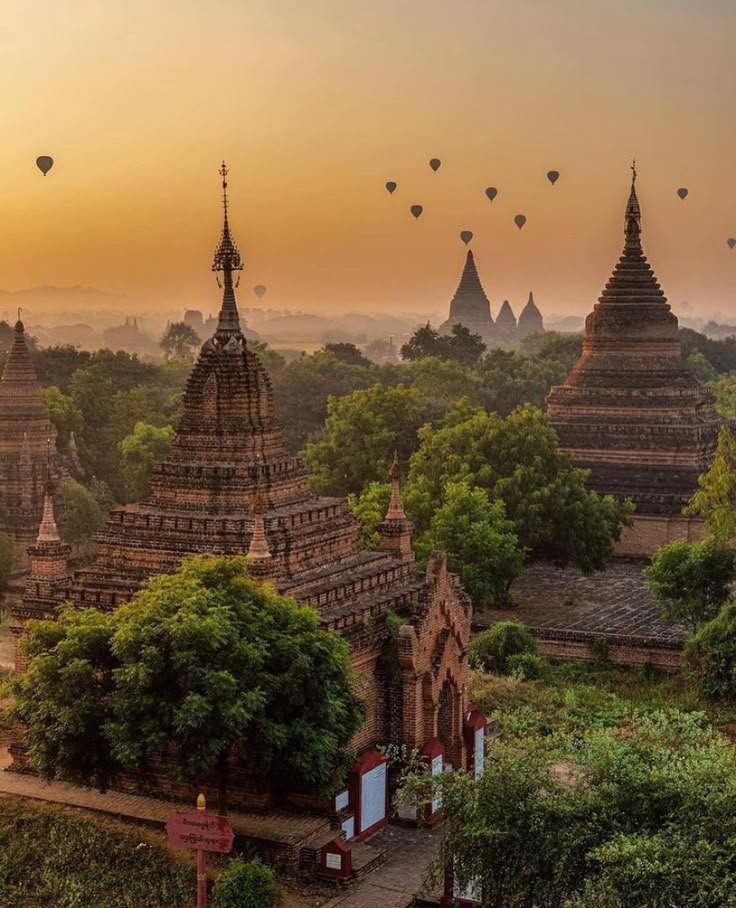
Travel Tips
Traveling to Myanmar in 2025 offers a unique opportunity to explore a country rich in culture, history, and natural beauty. However, the current political and security situation requires travelers to be well informed and cautious. This guide provides essential safety advice, insights into local customs, and basic language tips to help you navigate Myanmar respectfully and securely.
Safety Advice
Current Security Situation
Myanmar remains politically unstable following the 2021 military coup, with ongoing armed conflicts and civil unrest in many regions. The security environment can change rapidly, and some areas are considered highly dangerous or off-limits for travelers. The safest places to visit in Myanmar in 2025 are the main tourist hubs known as the “Tourist Kite”: Yangon, Bagan, Mandalay, and parts of Inle Lake. Even within these areas, vigilance is necessary.
Travel to states such as Rakhine, Kachin, Kayah, Kayin, Mon, and northern Shan, as well as regions like Sagaing and Magway, is strongly discouraged due to active conflicts and military operations. Check the latest local updates and government travel advisories before planning your itinerary.
Avoiding Risks
- Stick to well-known tourist areas: Avoid traveling outside the Tourist Kite unless you have special permissions and local guidance.
- Stay informed: Monitor local news and updates from your embassy or consulate. Situations can deteriorate quickly.
- Respect local laws: Myanmar enforces strict laws, and arbitrary detentions can occur. Avoid political discussions or demonstrations.
- Travel with trusted guides: Use reputable tour operators or local guides who understand the security landscape.
- Emergency contacts: Familiarize yourself with emergency numbers—police (199), ambulance and fire services (191).
Health and Hygiene
Healthcare infrastructure outside major cities is limited. Medical evacuation can be difficult and expensive. To stay healthy:
- Drink only bottled or purified water.
- Avoid street food that looks unhygienic.
- Carry a basic medical kit and any necessary prescriptions.
- Be cautious about animal contact; Myanmar has dangerous snakes and rabid dogs. Avoid walking in long grass and do not put your hands in hidden places where snakes might hide.
Transportation Safety
Road conditions can be poor, and traffic is often chaotic, especially in Yangon. Avoid driving yourself; hire local drivers or use taxis. Always wear seat belts if available. Be extra cautious when crossing streets—vehicles may not always stop for pedestrians. Avoid traveling after dark, particularly in rural areas, due to poor lighting and uneven paths.
Personal Security
Petty crime such as pickpocketing exists but is generally low in tourist areas. Still, keep valuables secure and avoid flashing expensive items. Stay in well-lit, populated areas at night and arrange transportation in advance after dark.
Local Customs
Understanding and respecting Myanmar’s customs will enrich your experience and help you avoid unintentional offense.
Respect for Religion
Buddhism is deeply ingrained in Myanmar’s culture. When visiting pagodas and monasteries:
- Dress modestly: cover shoulders and knees.
- Remove shoes and socks before entering religious sites.
- Avoid loud talking, smoking, or eating inside temple grounds.
- Do not point your feet at Buddha statues or monks; feet are considered the lowest part of the body.
- Women should avoid physical contact with monks.
Greetings and Etiquette
The traditional greeting is the mingalaba, often accompanied by a slight bow with hands pressed together in a prayer-like gesture. It is polite to return this greeting with a smile.
When interacting with locals:
- Use your right hand or both hands when giving or receiving items.
- Avoid touching someone’s head, as it is considered sacred.
- Public displays of affection are uncommon and best avoided.
- Political topics are taboo; avoid discussing the military or government.
Dress Code
In cities and tourist areas, casual clothing is acceptable, but modesty is valued. Wearing long skirts or pants and shirts with sleeves is advisable, especially when visiting religious or rural areas. Many locals wear the traditional longyi (sarong-like garment), and adopting this attire respectfully can be appreciated.
Tipping
Tipping is not mandatory but appreciated in restaurants, hotels, and for guides or drivers. Small amounts (around 5-10% of the bill) are customary.
Language Basics
The official language is Burmese, spoken by the majority of the population. English is spoken in major tourist areas, hotels, and by younger people, but proficiency varies.
Learning a few basic Burmese phrases can enhance your interactions and show respect:
- Mingalaba (မင်္ဂလာပါ) — Hello / Greetings
- Je zu tin ba de (ကျေးဇူးတင်ပါတယ်) — Thank you
- Ho bu (ဟုတ်ဘူး) — Yes
- Ma ho bu (မဟုတ်ဘူး) — No
- Nei kaun la? (နေကောင်းလား?) — How are you?
- Thwa me (သွားမယ်) — Goodbye
- A-nyaung (အညာ) — Left
- Ya-mya (ညာ) — Right
- Thar (သာ) — Please
When addressing locals, use polite particles like “ba” at the end of sentences to sound courteous.
Final Thoughts
Practical Tips
- Currency: The local currency is the Myanmar Kyat (MMK). Cash is king; ATMs are limited outside big cities. Carry small denominations for markets and taxis.
- Connectivity: Internet access can be slow or restricted. Purchasing a local SIM card is advisable for communication.
- Electricity: Myanmar uses 230V, 50Hz AC power with plug types C, D, F, and G. Blackouts can occur, so carry a flashlight or headlamp.
- Cultural Sensitivity: Photography of military personnel, government buildings, and certain ethnic groups is prohibited. Always ask permission before photographing people.
Summary
Traveling in Myanmar in 2025 requires careful planning and awareness of the evolving security situation. By sticking to safe tourist areas, respecting local customs, and preparing with basic language skills, you can enjoy Myanmar’s extraordinary cultural heritage and natural beauty while staying safe. Always remain vigilant, respect local traditions, and stay updated with reliable sources to ensure a rewarding and secure journey through the Golden Land.

